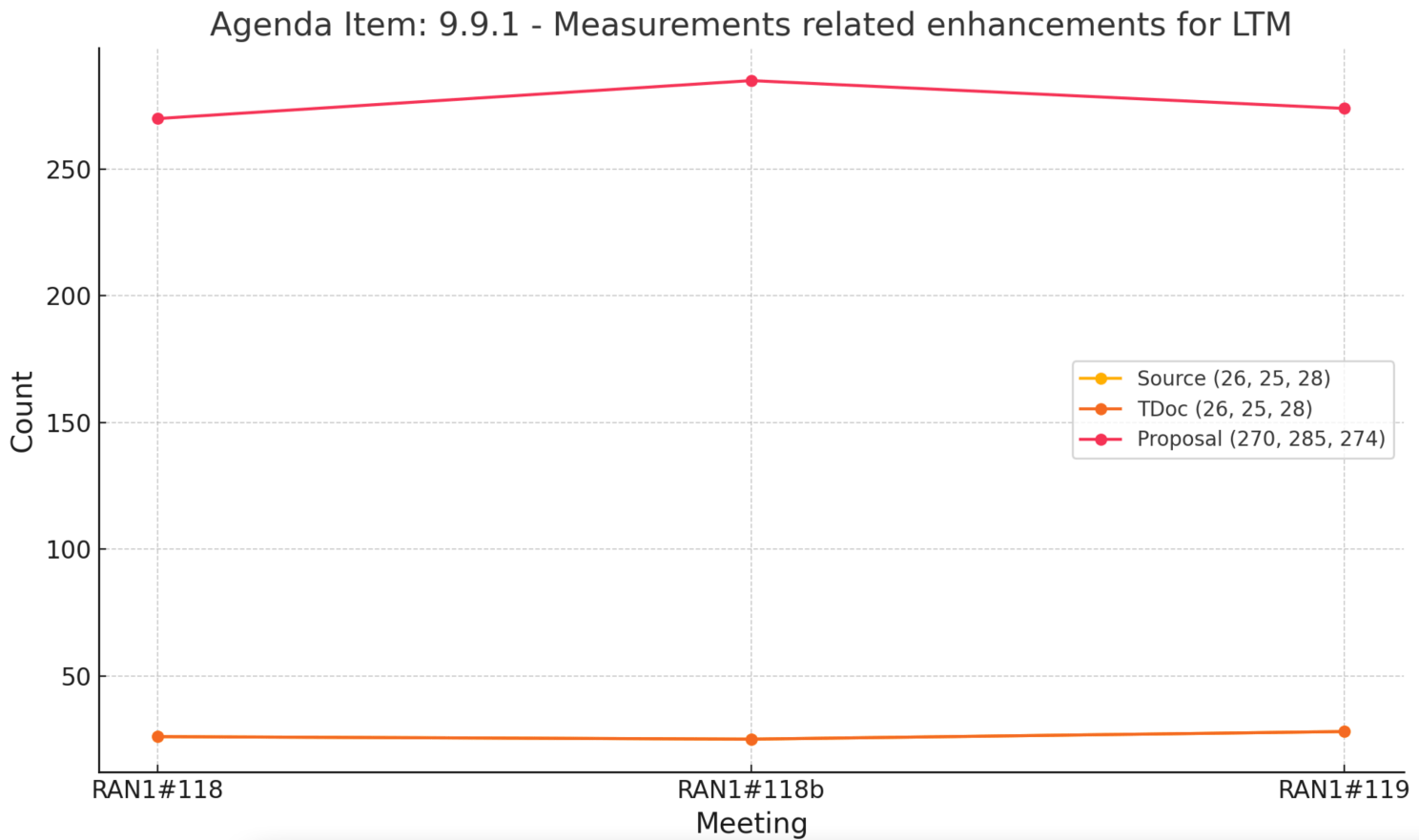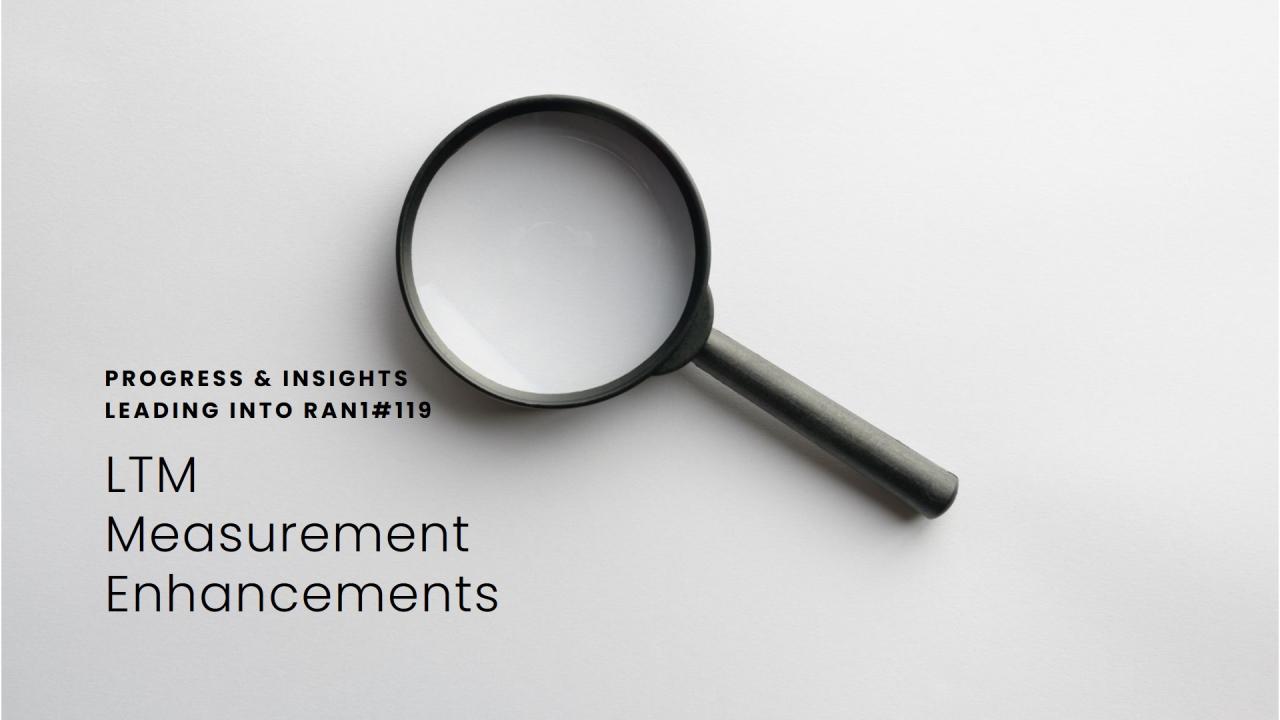Enhancing Mobility Standards
The 3GPP is advancing cellular standards in Release 19 through the NR Mobility Enhancements Phase 4 (NR_Mob_Ph4) work item. This initiative aims to address limitations from Rel-18 by expanding LTM capabilities, supporting inter-CU operations, and improving L1 measurement handling. These enhancements promise smoother mobility and better measurement efficiency in NR systems.
Tracking the Developments: Agenda Item 9.9.1
Agenda item 9.9.1, Measurements Related Enhancements for LTM, has seen significant contributions at RAN1#118 and RAN1#118-bis, paving the way for the upcoming RAN1#119 meeting.
Key Contributions
- Contributors: Over 25 sources submitted 25 TDocs with 270 proposals at each meeting.


- Technical Issues: Discussions spanned across 7 primary categories and 25 sub-categories.


Agreements Reached
At the RAN1#118b meeting in Oct. 2024, RAN1 delegates reached several agreements, including:
- L1-RSRP Reporting: Simplified format, serving cell inclusion, and flexible modes (periodic, semi-persistent, aperiodic).
- CSI-RS Based L1-Measurement: Semi-persistent and aperiodic reporting, RS derived from QCL RS or SSB.
- L1-SINR Measurement: Consensus pending—three alternatives under discussion.
- For earlier agreements, check out the previous article: “Understanding the Focus of Measurements Related Enhancements for LTM at RAN1#118-bis for 3GPP RAN1 Delegates” (published Oct. 9, 2024).
What’s Coming at RAN1#119?
28 sources contributed 274 proposals for agenda item 9.9.1. The upcoming meeting promises vigorous discussions, negotiations, and progress!


Spotlight on Contributors
- CATT leads with 23 proposals.
- Nokia, Samsung, Huawei/HiSilicon each contributed 15+.
- The rest averaged 8.5 proposals each.


These numbers reflect the influence of significant contributors and their role in shaping standards.
Where’s the Focus?
- Well-represented Areas: CSI-RS based reporting (51 proposals), Release 19 enhancements (40), Beam management and CSI acquisition (67). These topics are getting a lot of attention, which makes sense—they’re about improving reporting accuracy, preparing for the future, and making networks more efficient.


- Underrepresented Topics: When we flip the perspective, we see that event evaluation criteria, UE beam management, and CSI-RS configuration have very few or no proposals. Addressing these gaps is crucial for balanced and effective standards.
By putting effort into the well-covered and overlooked areas, delegates can ensure a standardization process that’s comprehensive and resilient, paving the way for smooth network evolution and an outstanding user experience.
Diversification vs. Specialization
- Apple‘s 12 proposals span diverse areas like gNB scheduled reporting and Conditional LTM.


- Samsung has 16 proposals focusing Other necessary enhancements, Conditional LTM and gNB scheduled reporting.


This mix of specialization and diversity reflects different approaches to the standardization process.
Dissenting Voices: Who Says “No”?
MediaTek’s 5 proposals, including 4 outlining positions against specific solutions, add perspectives to the dialogue.


The Workload Challenge
RAN1 delegates face the daunting task of analyzing 274 proposals before the meeting. Each proposal needs careful consideration to set future-proof standards. This workload demands efficient solutions.
Introducing Proposal Zone
Proposal Zone, part of the Standard Impact Extractor (SIE), – is an intuitive tool designed to simplify proposal analysis and enhance decision-making efficiency. Proposal Zone helps delegates:
- Access relevant proposals by agenda item.
- Analyze summaries, trends, and sentiment.
- Evaluate allies and competitors more effectively.


Proposal Zone can significantly reduce the manual effort required for evaluation, allowing you to focus on strategic discussions. Visit https://ixi.wispro.com to learn more.
The original article is from https://www.linkedin.com/pulse/ltm-measurement-enhancements-progress-insights-leading-lin--8t1oc/?trackingId=Wr2R4Q4egKkg4Rs8zYx7nA%3D%3D.

